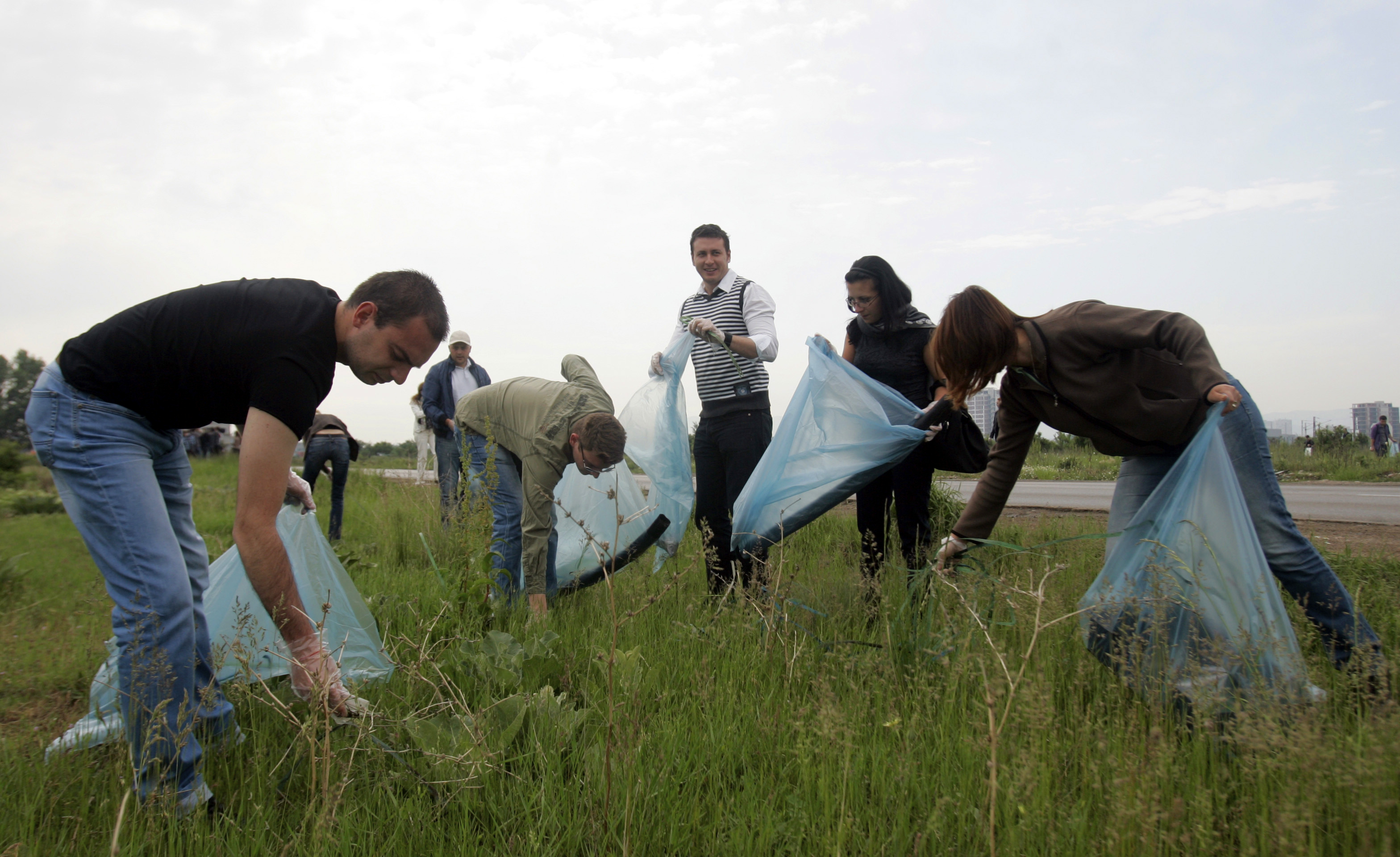Early in December is International Volunteer Day (IVD), an observance designated by the United Nations back in 1985. Individuals and organizations promote their volunteer efforts at local, national, and international levels.
In my past role at a large IT services organization, we marked the occasion by spearheading a mass global volunteer week. This included all employees, their friends and families, and even clients. Groups created and participated in local programs and initiatives designed to make a strong impact on their local communities.
As we mobilized teams across the organization, we strongly encouraged the capturing and posting of stories and images to the employee portal so that we could all join in the experience as a global community. We also published collective summaries and results across social media platforms to share the great initiatives and to highlight the various charitable organizations they supported.
Many were delighted to promote what their teams had achieved, while others were more reticent. There was a feeling instead that it took away from the good deeds by publicizing something intended to be left in the spirit of giving and selflessness. It wasn’t until the second year and a host of additional activities in between which finally convinced those outliers that the promotion of their efforts did more good to a broader community than they had initially realized.
This story is not uncommon among many companies who actively manage Corporate Social Responsibility (CSR) programs, specifically in the area of philanthropic and charitable needs. With best intentions and a strong moral compass, many leaders may feel they are harming efforts, or that they are taking advantage of an area best left to give support quietly and thoughtfully.
I respect the notion that this may feel inappropriate or that they are tainting noble pursuits, but the reality is the more our CSR efforts are shared across specific groups, the greater the overall impact. The rewards of a single charitable action can ripple beyond the intended audience, bringing joy, pride, and empathy, while also planting a seed for more actions and efforts in the future.
Here are 8 powerful reasons why sharing your philanthropic stories is important to socially responsible companies and the audiences they serve.
1. Raises Employee Morale
Let’s face it; keeping employees happy and engaged is a difficult job. Through the natural course of most organizations’ evolution, you have unpredictable market impacts, growing pains, tough decisions, and programs that are seen as popular or unpopular. Achieving and maintaining strong employee morale takes a myriad of resources, investments, and programs.
One area that is growing in importance among employees when rating best places to work is an organization’s philanthropic pursuits. The larger an organization, the more there might be going on. However, most of the time the bulk of these efforts never get communicated to the larger employee population. Small teams in remote locations or local offices take half a day to volunteer at a nursing home, spearhead a small blood drive, or collect funds to support local families in need. These lovely efforts fade in the backdrop of larger global efforts that can overshadow important hands-on work.
Employees are looking for greater purpose in what they do. If a company offers an outlet and provides a culture that supports volunteerism, it can be a deal breaker. When individuals learn of the massive level of efforts happening every month with generous and compassionate colleagues, the result is powerful. It can be the difference between top talent staying or walking out the door.
2. Attracts New Talent
Not only is good CSR a reason for current employees to stay, but it’s also a significant factor for future employees deciding where to work next. If strong candidates are unaware of your philanthropic programs, they will pursue other organizations that do a better job of sharing that information.
Top talent wants to work for employers who are making a difference in the world, and that must be apparent in the company culture. It should be institutionalized — part of company messaging, on your public website, across the employee portal, and in your social media content. Current employees should be your greatest advocates, speaking about regular and consistent acts of social impact. Potential candidates will seek out those currently employed to learn what the true culture is like. Make it a priority to give them something great to share.
3. Strengthens Relationship with Clients
Just like your employees, clients want to know they are partnering with responsible companies. It can’t be all about profits and margins – they want to know what you’re doing to give something back.
Typically, they too are actively involved with charities and causes, and many times ask for your support in their programs. So make your efforts visible to them as well. They may or may not reciprocate, but the level of respect you gain is invaluable and only strengthens your long-term relationships.
4. Builds Credibility with Prospects During the Selection Process
One thing I’ve noticed over the last several years is that the questions from prospects related to CSR efforts on Requests for Proposals (RFPs) have become more prevalent than ever before. Too many companies today have soiled their reputations with bad behavior and sloppy mistakes. Transparency in business practices, value for the price, general counsel, and social responsibility are telling signs of the company they are entrusting.
Sharing your philanthropic stories openly, and specifically what your employees are doing, reinforces what your brand is all about. You want to show all your key stakeholders what’s most important to you. When they see your commitment to a community, they see a more enduring brand establishing solid roots for the long haul. Their decision becomes that much easier, as this is the kind of company they seek to partner.
5. Visibility Boost for the Charitable Organization
Many forget about the flip side of charitable efforts. Yes, your company is doing good things and your employees are giving their time, money, and resources, but what about the organizations you are helping?
Just like for-profit organizations, non-profits are working hard to secure free publicity and larger visibility to advance their cause. It’s a competitive market for them too. As a supporter, no matter how big or small it may be, leverage your channels and voices to elevate the importance of their mission. Showcase their successes and stories, not just your own. When it comes time to develop creative programs and unique partnerships, they will be more apt to put efforts in with your organization knowing the great reach it will have.
6. Provides a Holistic Profile to Annual Reporting
This one may sound a little selfish, but consider the reach of your annual report. Yes, investors and analysts may be the largest audience, but they aren’t the only ones reading it. The annual report is a great way to show a holistic picture of the health of your organization.
The trick is ensuring you are capturing all the best metrics, stories, and hi-res images throughout the year so that you can give a proper view of the impact your organization has made as a whole. When you see that aggregate picture, you’ll be amazed at what your fellow employees have accomplished. Better yet, it sparks their desire to top it the following year.
7. Humanizes Your Brand
As I stated in my recent 2017 Trends piece, brands will continue to focus on humanizing themselves, especially in the digital world.
In an ever-increasing, fast-paced, online world of pushing content upon content, it can make a brand appear faceless with no personality. What better way to achieve an honest connection than by telling the stories of humanity. Even the simplest of stories, depicting a single genuine effort by one compassionate employee, can bring character and identity to your brand.
8. Expands Your Community and Creates Momentum
As you get better at sharing the stories and the successes of your CSR efforts, you’ll begin to notice new followers and groups of interest outside of your typical business community.
People are hungry to find good companies doing great things. They want to support you so you can do even more good. And the more you do, the greater the momentum builds inspiring others to join in.
Be on the forefront of social impact – lead the way so others will follow your great example.
What organizations do you feel are great examples of CSR leaders? What are they doing well when it comes to bringing visibility to their philanthropic efforts?
Image Credit: ©iStock.com/Cylonphoto
Originally published in 2015, updated for 2017.

